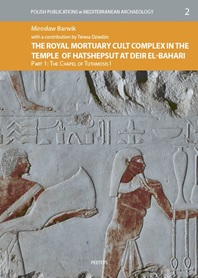| Main » Ad Board » ДРЕВЕН ЕГИПЕТ И АФРИКА » Архитектура |
Mirosław Barwik, Teresa Dziedzic - The Chapel of Tuthmosis I
| 08.01.2022, 18:03 | |
Археологическо представяне на заупокойното светилище на Тумос I (прибл. 1504-1492 г. пр. н.е.) в храмовия комплекс в Деир ел Бахри. - на английски език, от Google Drive, формат PDF. Сваляне с ляв бутон (downloading by left button) от страницата на предоставящия сървър, после през бутона стрелка надолу/after by down arrow button. АЛТЕРНАТИВЕН ЛИНК / ALTERNATIVE LINK: - на английски език, от Peeters Publishers, формат PDF. Свалянето става с десен бутон (downloading by right button) и Save as...
| |
| Views: 519 | Placed till: 08.02.2022 | Rating: 0.0/0 | |

